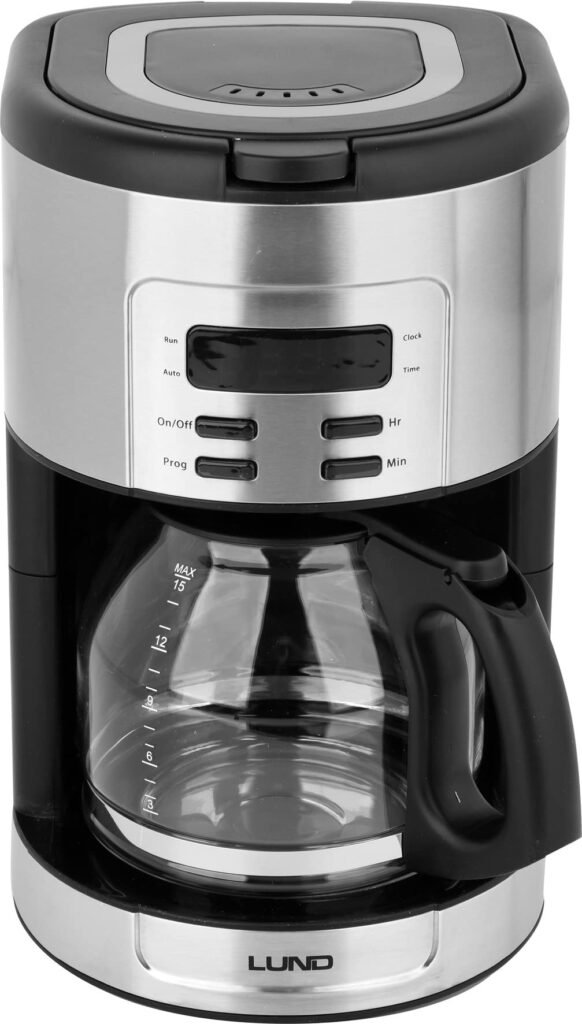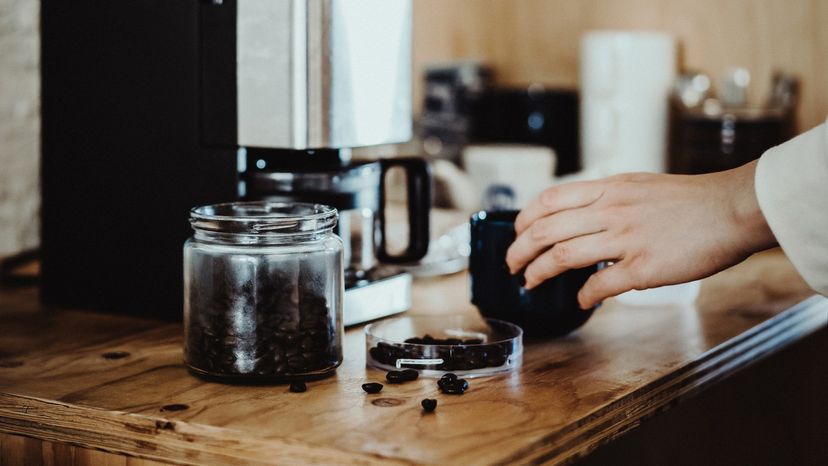Have you ever wondered about the mysterious warming plate on your coffee machine? This small, yet essential component plays a crucial role in ensuring that your coffee stays warm and enjoyable for longer periods. Acting as a cozy resting spot for your carafe, it utilizes advanced heating technology to maintain the ideal temperature of your coffee, so you can savor every sip. In this article, we will take a closer look at what exactly a coffee machine’s warming plate is and uncover the fascinating workings behind it. Get ready to discover the secret behind that delightfully warm cup of coffee!
What Is a Coffee Machine’s Warming Plate?
Definition:
A coffee machine’s warming plate, also known as a hot plate, is a piece of equipment found on most drip coffee makers. It is a heat-resistant plate located on the top of the machine where the coffee carafe sits. The primary function of the warming plate is to keep brewed coffee warm for an extended period of time.
Purpose:
The warming plate serves the essential purpose of maintaining the desired temperature of brewed coffee. Without this feature, the coffee would cool down quickly, leading to a less enjoyable drinking experience. The warming plate’s ability to retain heat extends the period during which the coffee remains pleasantly warm and ready to serve.
How Does a Coffee Machine’s Warming Plate Work?
Basic Mechanism:
The basic mechanism of a coffee machine’s warming plate involves direct contact heating. When the coffee machine is switched on, the warming plate is activated and heats up. The coffee carafe is then placed on top of the warming plate, allowing the direct transfer of heat from the plate to the carafe, effectively keeping the coffee warm.
Temperature Control:
To ensure optimal coffee enjoyment, the warming plate is equipped with temperature control features. The temperature is typically controlled by a thermostat, which monitors the heat and adjusts accordingly. This allows the warming plate to maintain a constant temperature, ensuring that the coffee remains at the ideal serving temperature.
Heating Element:
The heating element is the key component responsible for generating heat in the warming plate. It is generally composed of a coil made of a conductive metal, such as copper or aluminum. When electricity flows through the coil, it produces heat, which is then transferred to the warming plate and subsequently to the coffee carafe.
Energy Source:
Most coffee machine warming plates are powered by a direct connection to a power source. When the coffee machine is plugged in, it draws electricity to supply the heating element. However, some portable coffee makers may include battery-powered warming plates, allowing users to enjoy warm coffee even in locations without access to electricity.
Construction and Materials:
Warming plates are commonly made of durable materials that can withstand high temperatures without warping or affecting the taste of the coffee. Stainless steel and ceramic are two popular choices due to their excellent heat retention properties. Additionally, the warming plate is often insulated to prevent excessive heat loss and protect the coffee maker’s internal components.

Definition:
Explanation of a Warming Plate:
A warming plate is a metal or ceramic surface located on the top of a coffee machine. Its purpose is to maintain the temperature of brewed coffee, ensuring it stays warm and ready to serve for an extended period. The warming plate is an essential component for coffee enthusiasts who prefer to savor their beverages at an ideal temperature.
Components and Location:
The key components of a warming plate include a heating element, a temperature control mechanism, and the plate itself. The warming plate is typically situated on the top of the coffee machine, directly below where the coffee carafe is placed. It is designed to be easily accessible for placing and removing the carafe without the risk of burns.
Purpose:
Keeping Coffee Warm:
The primary purpose of a coffee machine’s warming plate is to keep brewed coffee warm. By maintaining a consistent and desirable temperature, the warming plate ensures that each cup of coffee is as enjoyable as the first. Without a warming plate, the coffee would experience a rapid drop in temperature, leading to a less satisfying drinking experience.
Avoiding Temperature Loss:
One of the main challenges with serving coffee is the inevitable temperature loss. However, with the presence of a warming plate, the temperature loss is significantly reduced. The warming plate’s ability to keep the coffee at the desired temperature prevents the need for reheating or discarding cold coffee, resulting in less waste.
Serving Convenience:
The warming plate also offers convenience for those who enjoy multiple servings of coffee. Instead of brewing a fresh pot for each cup, the warming plate allows users to return to the carafe and pour another cup of warm coffee at their convenience. This feature is especially beneficial for social gatherings or busy mornings when time is limited.
Basic Mechanism:
Direct Contact Heating:
The basic mechanism of a coffee machine’s warming plate involves direct contact heating. Once the coffee machine is turned on, the warming plate begins to heat up. This heat is then directly transferred to the coffee carafe when placed on the plate. The direct contact ensures efficient heat transfer, maintaining the warmth of the coffee.
Conduction:
Conduction plays a significant role in the warming plate’s mechanism. The heat generated by the heating element is conducted through the plate’s surface, allowing the warmth to spread evenly across the entire plate. This conduction process ensures that every part of the coffee carafe remains uniformly warm, providing consistent temperature throughout.
Uniform Heat Distribution:
To maintain a consistent temperature across the warming plate, uniform heat distribution is crucial. The design and construction of the warming plate are optimized to evenly distribute the heat generated by the heating element. This ensures that no area of the coffee carafe is colder or warmer than another, providing a satisfactory coffee drinking experience.
Temperature Control:
Ideal Serving Temperature:
The warming plate is designed to maintain coffee at an ideal serving temperature. Generally, the ideal temperature for brewed coffee is around 175-185°F (79-85°C). This range allows the coffee to retain its flavors and aroma while remaining hot enough to enjoy. The temperature control features in the warming plate help achieve and maintain this desired temperature.
Thermostat Operation:
A thermostat is often incorporated within the warming plate to monitor and control the temperature. The thermostat senses when the coffee’s temperature drops below the desired range and activates the heating element to restore the warmth. Once the coffee reaches the ideal temperature, the thermostat adjusts the heating element to maintain the temperature without overheating the coffee.
Temperature Settings:
Some coffee machines offer temperature settings that allow users to customize the warming plate’s heat intensity. This feature is particularly useful for coffee enthusiasts who prefer their coffee at a specific temperature, catering to individual preferences. By adjusting the temperature settings, users can achieve their desired coffee experience.

Heating Element:
Coil:
The heating element of a coffee machine’s warming plate usually consists of a coil made of conductive metal. Copper or aluminum are commonly used due to their excellent conductivity. When electricity flows through the coil, it generates heat. This heat is then transferred to the warming plate, providing the necessary warmth to keep the coffee hot.
Electric Resistance:
The coil of the heating element relies on electric resistance to produce heat. The resistance wire within the coil resists the electric current, converting it into heat energy. This process allows the coffee machine’s warming plate to reach the desired temperature quickly and efficiently, ensuring that the coffee stays hot for an extended period.
Energy Source:
Direct Power Connection:
The majority of coffee machine warming plates are designed to be connected directly to a power source. When the coffee machine is plugged in, it draws electricity to power the heating element, enabling the warming plate to generate heat. This direct power connection ensures a continuous source of energy for keeping the coffee warm.
Battery:
In situations where access to electricity is limited or non-existent, some portable coffee makers may offer battery-powered warming plates. These battery-operated warming plates allow users to enjoy warm coffee in remote locations or during outdoor activities. The batteries provide the necessary power for the heating element to function and keep the coffee hot.

Construction and Materials:
Plate Material:
Warming plates are typically constructed using materials that can withstand high temperatures without warping or affecting the coffee’s quality. Stainless steel is a popular choice due to its excellent heat retention properties. Ceramic is also favored for its ability to distribute heat evenly. The choice of material ensures that the warming plate is durable and reliable over time.
Insulation:
To prevent excessive heat loss, coffee machine warming plates are often insulated. This insulation not only helps retain heat within the plate but also protects the internal components of the coffee maker. By minimizing heat loss, the warming plate can operate more efficiently, maintaining the coffee’s temperature for an extended period.
Safety Features:
Safety is a top concern for coffee machine manufacturers, and warming plates often include several safety features. These may include auto shut-off mechanisms that turn off the warming plate after a certain period of inactivity. Additionally, some warming plates are designed to be scratch-resistant to prevent accidental damage. These safety features provide peace of mind to coffee lovers while enjoying their warm beverages.
Advantages of a Coffee Machine’s Warming Plate:
Extended Coffee Enjoyment:
Perhaps the most significant advantage of a coffee machine’s warming plate is the ability to prolong the enjoyment of coffee. With the warming plate’s help, coffee lovers can take their time sipping their favorite blend without worrying about it going cold. This extended enjoyment adds to the overall coffee-drinking experience.
Convenience for Multiple Servings:
For those who enjoy multiple servings of coffee, a warming plate offers unmatched convenience. Instead of needing to brew a fresh pot for each cup, users can rely on the warmth retained by the plate. This convenience is particularly beneficial during social gatherings or busy mornings, allowing for quick and effortless refills without compromising the coffee’s temperature.
In conclusion, a coffee machine’s warming plate is an essential component for maintaining the temperature of brewed coffee. Through its basic mechanism of direct contact heating and conduction, the warming plate ensures uniform heat distribution and helps retain the ideal serving temperature. With various temperature control features, a combination of electric resistance and a heating coil, and the ability to connect to a power source or operate on batteries, the warming plate offers convenience and extends the enjoyment of coffee. Constructed using durable materials, insulated for efficiency, and equipped with safety features, a coffee machine’s warming plate is a valuable addition to any coffee lover’s kitchen.


